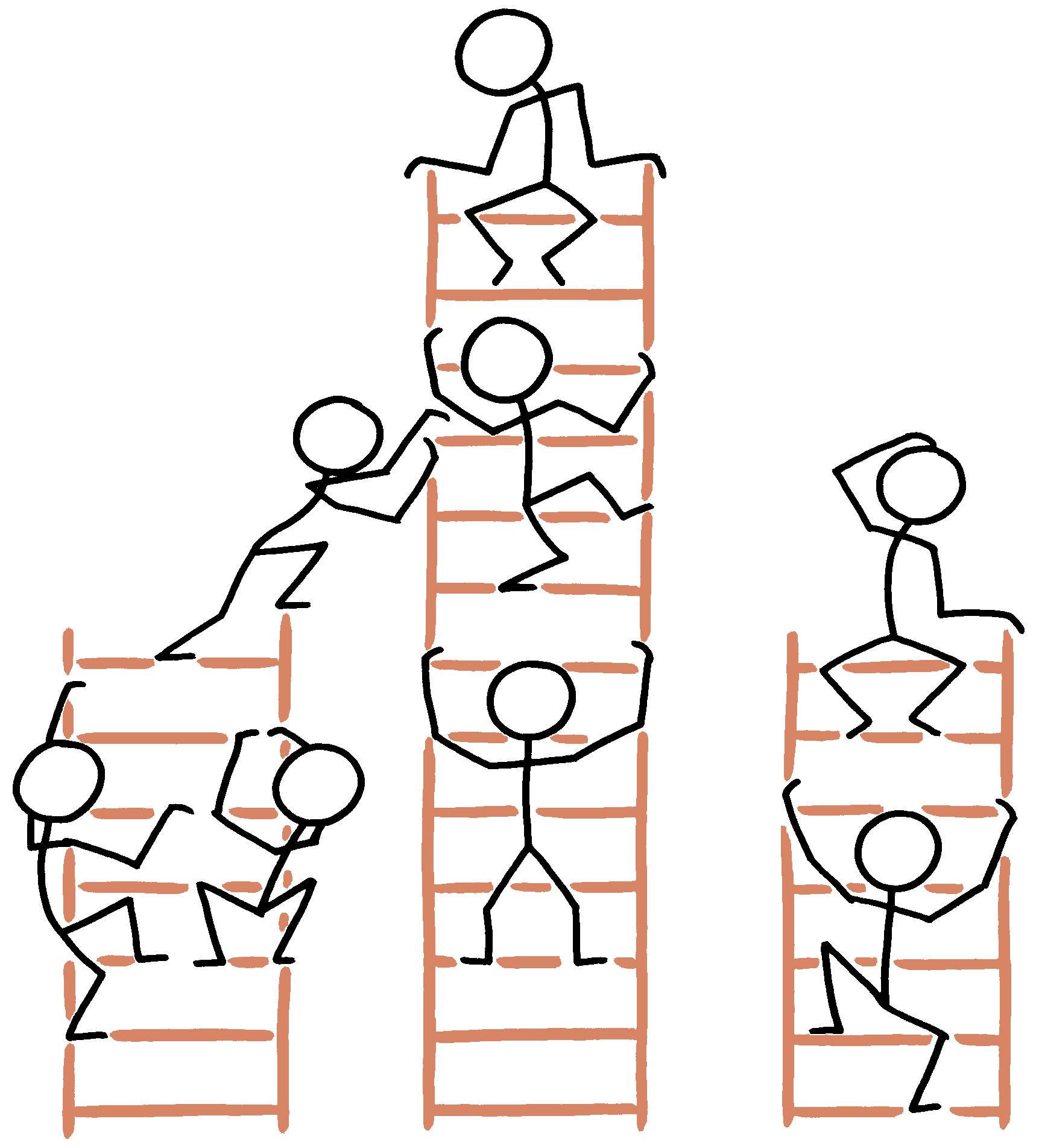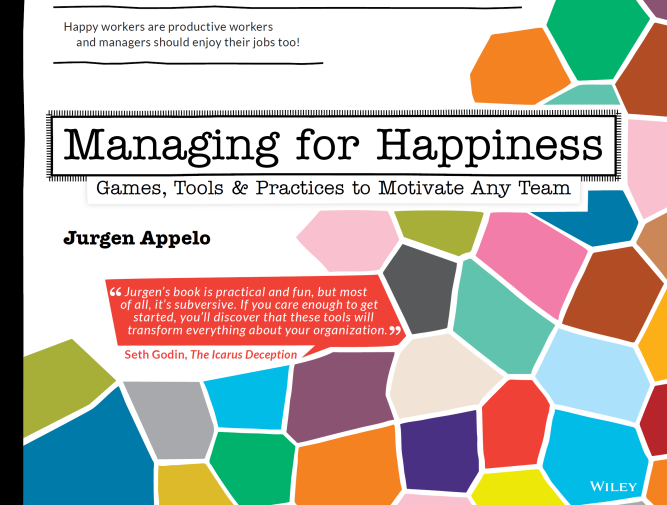The iron triangle in project management tells us that a product is the result of…

The Problem with Career Ladders
Traditional career ladders have all kinds of problems. These are the four that I have identified.
I once had a small disagreement with the HR manager of an organization where I worked. She showed me the suggested career paths that software developers could have in our organization. To my horror I saw, if I remember well, that Software Testers could become Software Developers (the other way around was not expected), Software Developers might become Project Managers (not the other way around), and Project Managers could become Business Unit Managers (again, not the other way around). And, as could be expected from a hierarchically oriented organization, all the roads ultimately led to the Pope in Rome. Or, in our case, one top management position, which was theoretically possible, but practically unavailable.
Management bias is the main problem of traditional career ladders. The only meaningful opportunity to gain status and earn better wages in many organizations is to be promoted into management. For anyone familiar with the movie business this makes little sense. What could be the next step for Julianne Moore? Be promoted to a position of Lead Actress? Actress Manager? Vice-President of Acting? Certainly, some actors become directors. But most don’t. And successful directors have sometimes been unsuccessful actors, and vice versa. Most importantly, whether people want to be an actor or a director is their own free choice. They don’t wait to get “promoted” to an available position by anyone else. They choose their career steps, present themselves as candidates, and get picked for new projects based on their reputation. Or not.
The Peter Principle is the second problem with traditional career ladders. It says that workers in hierarchies get promoted until they reach a level at which they are no longer competent. And then they stay there, not able to get any further promotions. The Peter Principle virtually guarantees that all upper levels of hierarchical organizations are full of incompetent people, who are unable to move further up their ladders. (Please note that this is a universal problem; it does not apply only to managers named Peter.)
The third problem with traditional career ladders is that new economic and technological developments scream for more variety in possible career paths. Linearity is out, and non-linearity is in. Maybe a project manager wants to try her hand at account management, and work mainly from her home. Maybe a recruiter would like to be an HR manager for just a year. Maybe a designer and animator get married and want to share a job and a child. Maybe an office manager wants to work half-time for a while, launching his own web shop for second hand office supplies. Career paths not only go up. They can also go sideways, forward, and even backward sometimes. Modern businesses in the 21st century must learn how to accommodate for all of this, and more.
Finally, the fourth problem, I have a vision that one day, far into the future, nobody will ever insult any worker with the infamous words, “I want to talk with your superior.” Because there won’t be any subordinates and superiors. Just people, working together.
My new book Managing for Happiness is available from June 2016.






